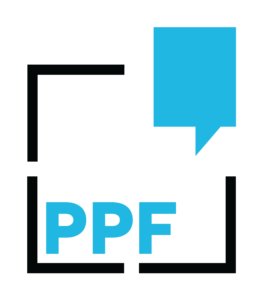
A Policymaker’s Recovery Agenda for Higher Education
By an assembly of higher education and workforce practitioners

An assembly of higher education and workforce practitioners, thinkers and entrepreneurs came together during the COVID-19 crisis to find ways to help as our institutions and policymakers grapple with challenges never-before seen in our lifetimes. All participate on a voluntary and non-partisan basis, speaking on behalf of themselves and not their respective organizations.
Alexi White, André Côté, Dana Stephenson, Daniel Komesch, Danielle Olsen, David Porter, Gladys Okine, Hamoon Ekhtiari, Karen Bakker, Karim Bardeesy, Jake Hirsch-Allen, Lena Patterson, Michael Cassidy, Misheck Mwaba, Simon Morris-Lange
Canadian higher education, like other sectors,  has been sideswiped by COVID-19. For publicly-funded universities, colleges and polytechnics from coast to coast, this crisis presents the ultimate test of institutional resilience, adaptability and even viability. There is little likelihood things will return to the pre-COVID “normal” any time soon, if at all. And in important ways, it would be a shame if they did.
has been sideswiped by COVID-19. For publicly-funded universities, colleges and polytechnics from coast to coast, this crisis presents the ultimate test of institutional resilience, adaptability and even viability. There is little likelihood things will return to the pre-COVID “normal” any time soon, if at all. And in important ways, it would be a shame if they did.
The stakes are incredibly high. Millions of current students and newly displaced workers will need the education and skills to find their place in a distressed and very different labour market. Individual Canadians and their families are counting on it; employers and industry urgently require it to recover and grow. But our higher education and workforce systems are not currently equipped to deliver it at the pace and scale required.
This proposal to policymakers and higher education leaders – prepared by a group of higher education online and digital learning practitioners, thinkers and entrepreneurs – is premised on a simple, twofold idea: Canadian higher education will need help to get through this crisis and support recovery; and this presents a once-in-a-generation moment, both to support Canada’s recovery and to accelerate change in higher education.
To this end, we offer a set of goals and a series of proposals to policymakers and higher education leaders that should inform the crisis recovery agenda.
COVID-19 as Threat and Catalyst
In three short months, the crisis has presented Canada’s publicly funded institutions with existential questions about their present and the future. How to adapt when domestic students are uncertain if they will return in the fall; when large, maybe permanent declines in international student enrolments  threaten a significant source of revenue; and when the swift transition of two million students to online, remote learning is not just an emergency measure, but part of a new reality?
threaten a significant source of revenue; and when the swift transition of two million students to online, remote learning is not just an emergency measure, but part of a new reality?
This crisis arrived at a time when Canadian higher education, strong in many respects, is falling behind global leaders in adapting teaching and learning models. While an international pedagogical consensus is forming around the future of higher education — systems that are technology-enabled, demand-driven, work-integrated, more accessible and flexibly oriented to the needs of lifelong learners — the Canadian model still tends toward inflexible program structures, classroom-based instruction, and slow response to the changing needs of the economy, employers and, most importantly, learners.
This crisis demands an accelerated pivot to the learner-centred system of tomorrow. What are some of its key features? Radically enhanced student access and support, particularly to underserved groups and to the vast cohort of in-career lifelong learners. Instructional design that blends classroom, online and on-the-job learning, to improve education quality, career outcomes and “work-life-learning” flexibility for students. The option of shorter, modular, transferable programs and credentials, designed with employers, which offer learners clear pathways to their first job or next career. Robust, transparent, system-wide data and measurement, from system inputs to learner skills and employment outcomes. The Public Policy Forum’s Skills Next series builds the case for these and other features of the education and workforce Canadians will need to succeed.
Make no mistake: our institutes of higher education are essential assets, both in their communities and for the country. Like other affected sectors, they have a strong case for emergency government aid to protect their public mission and avoid catastrophic cuts or even closures. But gearing support exclusively to crisis survival risks further entrenchment of systems that need to change. It would be an active choice to limit Canada’s competitiveness in a 21st-century economy where talent is the most critical currency.
With ‘Strings Attached’: A Future-Focused Recovery Agenda
To date, the federal government has stepped up with emergency aid to Canadian higher education, with a  substantial package for students and new graduates and investments in academic research. Both will provide indirect financial help to institutions, but neither do enough.
substantial package for students and new graduates and investments in academic research. Both will provide indirect financial help to institutions, but neither do enough.
We understand that the provincial/territorial and federal governments continue to review proposals from post-secondary institutions and associations for urgent support to address operating funding shortfalls, as well as other related proposals for immediate priorities such as online program development, research continuity and infrastructure stimulus. We also recognize the division of responsibilities between provincial/territorial governments as higher education system stewards, and the federal government as the initiator of national innovation and skills policy. This unique window calls for an invigorated spirit of intergovernmental collaboration.
For both levels of government, we believe further emergency support is necessary but should be tied to a set of clear, shared goals to catalyze a future-focused transition:
- Encourage ongoing and systematic innovation, resilience and risk-taking in teaching as higher education adapts to a rapidly altered environment.
- Increase access and inclusion, particularly for working-age learners, low-income and underserved groups that most need support to achieve an equitable recovery.
- Incentivize better alignment of programs and curriculum with employment opportunities and labour market needs.
- Require openness, transparency and collaboration to yield better value for public investment.
We offer a series of proposals to policymakers that apply both investment and policy or regulatory levers to drive immediate recovery from COVID-19 and accelerate change in higher education in line with these goals.
For Immediate Economic Recovery:
Governments should invest in targeted funding for adult learners and pursue higher education initiatives  that can support rapid re-employment, ensuring that any Canadian who wants to upskill to return to a job they have been displaced from or reskill into a new profession can access the financial resources and educational pathways to do so.
that can support rapid re-employment, ensuring that any Canadian who wants to upskill to return to a job they have been displaced from or reskill into a new profession can access the financial resources and educational pathways to do so.
- Substantially enhance the new Canada Training Benefit for eligible lifelong learners aged 25 to 64 by increasing support for education and training from the current level of $250 per year to $1,000 per year with a lifetime limit of $20,000, and expanding eligibility to include a broader mix of online learning and workforce development providers. Initially, the increase could be targeted to recipients of the Canada Emergency Response Benefit (CERB) to support rapid re-training and return to employment.
- Invest in “rapid response” programs for re-employment, supporting education and workforce development partnerships with employers to rapidly introduce upskilling and retraining that offer pathways to in-demand jobs and recovering sectors of the economy.
- Encourage institutions to offer competency-based evaluations geared to rapid reemployment for in-demand fields, allowing students to secure credits towards a credential by proving ability at a milestone level in lieu of the typical time-based program requirements (e.g. the Athabasca University model).
- Introduce emergency credit transfer provisions for learners in publicly funded programs, allowing students whose learning pathways have been disrupted by the crisis to “stack” credits achieved at different institutions towards their credential provided they meet a baseline level of equivalency.
- Support the development of micro-credential programs that are collaboratively developed by educational institutions and employers to support the rapid upskilling of students and unemployed workers into areas of high labour-market demand. These should identify and communicate employer-relevant skills and competencies, include online and work-integrated learning, and offer career clarity and employer networks for learners.
- Temporarily suspend or streamline university and college program approval requirements for 24 months, allowing educational institutions to “fast-track” the launch of new programs which they can demonstrate will meet employment, labour market and economic recovery objectives (e.g. demonstrated by real-time labour market information, or supported by industry coalitions).
To Accelerate Change in Higher Education:
With emergency funding and ongoing program investments, governments should both offer incentives and set conditions (i.e. carrots and sticks) tied to pursuit of future-focused higher education system goals, especially in the area of technological innovation.
- Introduce Technology-Enabled Teaching and Learning Planning Grants, supporting institutions to develop clear, publicly accessible strategies to guide program development and technology investment for teaching and learning (e.g. identifying global pedagogical best practices, digital fluency and inclusion initiatives for learners and educators, or mobile-first technology standards).
- Require that funds for institutions to transition to high-quality online learning (e.g. for online and hybrid course development, learning technology, materials and textbooks) apply Open Ecosystem principles, such that:
- content is made freely available under open licences and in accessible online libraries – as shareable and repurposable resources for faculty across institutions, and at low or no cost
 for students, ensuring the most value for public investment (e.g. as required in the U.S. for $2 billion in training stimulus following the 2008 crisis);
for students, ensuring the most value for public investment (e.g. as required in the U.S. for $2 billion in training stimulus following the 2008 crisis); - technology is open source and allows for interoperability and integration through open application programming interfaces (APIs) and in accordance with open standards, benefiting institutions by ensuring choice and competition; and,
- institutions adhere to “open data” requirements for public use and transparency, making available searchable, aggregated, machine-readable data sets on student outcomes (e.g. program-level competencies, employment), programs (e.g. course catalogues, learning outcomes), and other high-value topics.
- content is made freely available under open licences and in accessible online libraries – as shareable and repurposable resources for faculty across institutions, and at low or no cost
- Establish an Open Learning Materials Grant, supporting those institutions that commit to replacing textbooks and other compulsory content with free, open digital resources (e.g. the University of Maryland Global Campus replaced all textbooks, saving its students millions in costs each year), which can also be shared across institutions.
- Fund “innovation sandboxes” to encourage institutions to prototype and test new program, learning and business models, borrowing from sectors such as financial services and energy that allow new entrants to pilot under lower regulatory requirements to assess if they can deliver value and improved outcomes before scaling up.
- Reward institutions that meet targets related to government innovation, economic development and skills agendas, such as graduate employment and work-integrated learning (WIL) placements in regional innovation sectors (e.g. aligned with provincial/territorial economic and workforce strategies, or the federal superclusters and strategy tables).
The future for higher education should be more learner-centred, technology-enabled and demand-driven. This vision focuses on the core teaching and training mission of public institutions, without discounting their other missions that include research and innovation, and the development of well-rounded, educated citizens. It demands boldness, a belief that higher education requires more fundamental, rapid transformation.
As with other sectors, this tragic crisis presents higher education with an enormous test of its resilience and flexibility. Passing the test requires a willingness to seize this generational moment.
This article is a collaboration with First Policy Response, a project of the Ryerson Leadership Lab, the Brookfield Institute for Innovation + Entrepreneurship, and Matthew Mendelsohn.






